




Mountain Informations for Kids
In most parts of the world, mountains have always been home to some of the Earth’s richest wildlife and some of its harshest climates. A mountain is a land reform that rises high above the surrounding terrain in a limited area. They are made from rocks and earth. Some features of mountains are:
The summit, or the top of a mountain;
The slope or side of the mountain;
And a very steep valley between young mountains known as the gorge.
In this article, let's learn the features of mountains in detail, example of mountain, mountain images, mountain soil images and much more.
Different Types of Mountains
Given below are the types of mountains, Example of mountain and Mountain images are:
1) Upward Mountain
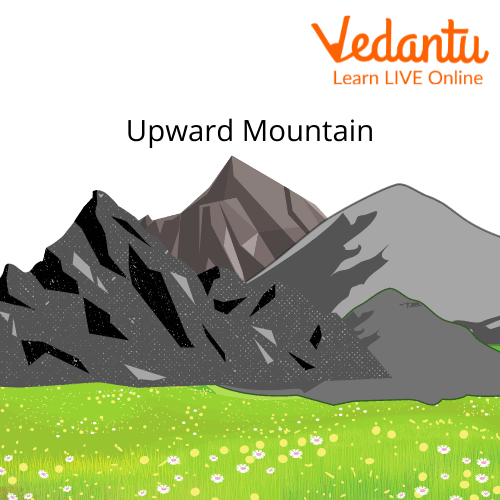
Upward Mountains
When the earth's crust is forced upward in the centre, upward mountains are created, which have a gentle slope. Example: The Rocky Mountains in Colorado.
2) Volcanic Mountain
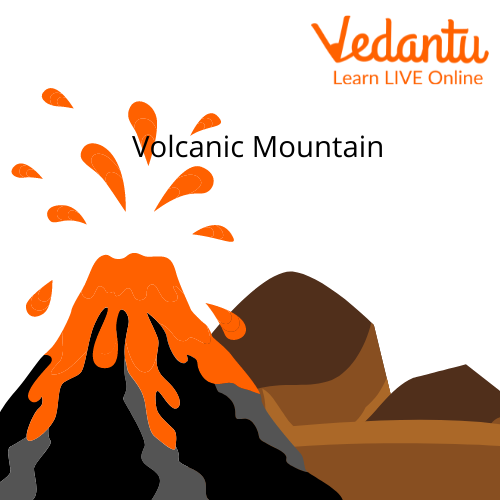
Volcanic Mountains
Mountains in the category of volcanic mountains are unique. A volcano is an opening or vent through which gases, water vapour, ash, and magma are released. Example: Mount Fuji.
3) Residual mountain

Residual Mountains
Mountains are still present but have undergone extensive weathering and erosion known as residual mountains. The remaining mountains were destroyed by rivers, glaciers, wind, etc. to form their present shape. Example: Nilgiri hills.
4) Folded mountain
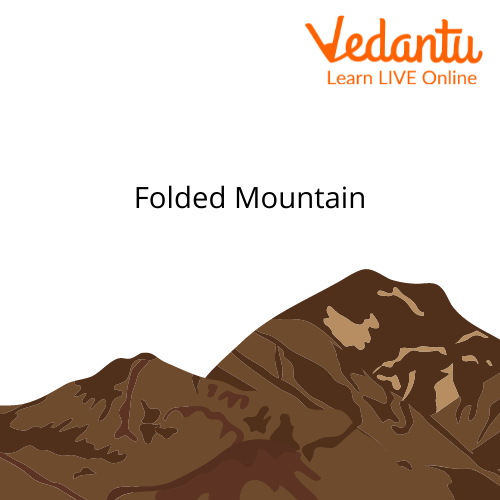
Folded Mountains
When two plates contact head-on, their edges collapse and create folded mountains, much like how paper folds when pushed together. The Himalayas in Asia is an example of a fold mountain.
5) Block mountain

Block Mountains
The Block Mountains are an upright area of land between two faults, on either side of a valley, or across a canyon gap. Examples of mountains: Mountains of Satpura.
Soils of the Mountains
Mountain soil is mainly found on hill slopes and is formed by the deposition of organic matter from woodlands and forests. Mountain soils are found in the Himalayan regions of Sikkim, Assam, Arunachal Pradesh and Kashmir and also in the Peninsula Eastern Ghats.
Following are some mountain soil images with information:
1) Alluvial Soil
The alluvial soils are formed by flooding and are normally considered fertile. These soils are considered best for agriculture. They are good for various crops including rice, wheat, sugarcane, etc.

Alluvial Soil
2) Black Cotton Soil
Black soil is also known as Regure Soil or the Black Cotton Soil. It covers 15% of the total land area of the country. It covers most of the Deccan Plateau, parts of Maharashtra, Madhya Pradesh, Gujrat, and some parts of Tamil Nadu.
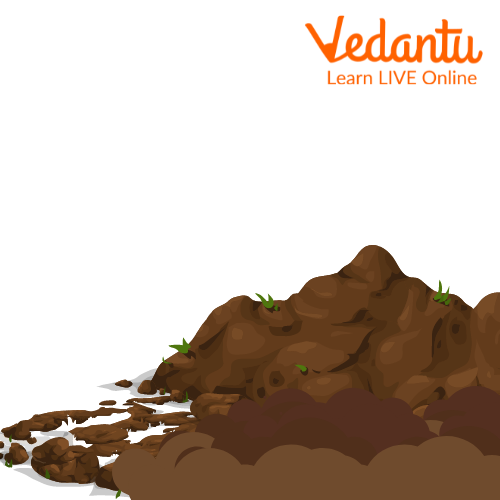
Black Cotton Soil
3) Red & Yellow Soil
These are developed over the grantile, genesis, and quartzite of the Precambrian and Archean eras. This soil performs well when irrigated. Red and yellow soils have very low productivity.

Red & Yellow Soil
4) Laterite Soil
It accounts for about 3.7% of the total area of the country. These are typical soils of the monsoon climate which is characterised by seasonal rainfall.

Laterite Soil
What is Hill?

Hill
Hill is a piece of land that looks like a little bump in the earth. Given below are 5 sentences about hills.
A natural mound of earth created either by faulting.
A bump in the landscape.
Rising gradually from its surroundings.
Less than 2000 feet high.
They are mostly unnamed.
Hill Vs Mountain
Some people think that mountains are a part of the Ranges, and that hills are just smaller than mountains. However, this is not always true. A hill is an elevation on the earth's surface that rises above any surrounding level terrain and a low mass of land. A hill gets its height from the ground beneath it whereas a mountain gets its height by being pushed up against other lands. Hills are so much smaller than mountains!
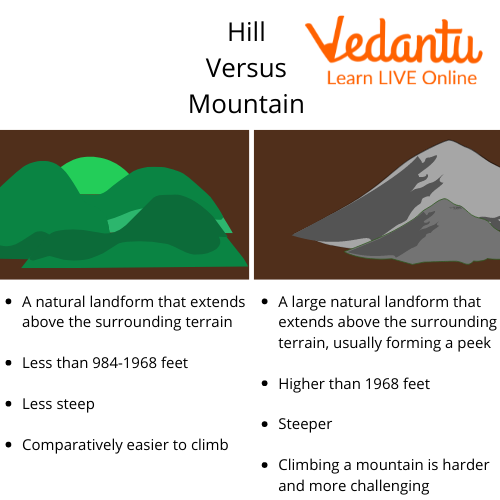
Hills vs Mountains
Summary
From the article, 5 sentences about mountains, we have learnt about mountains, their types, soils of the mountains, what the study of mountains is called and much more. There are six types of mountains i.e., Upward mountains, Residual Mountains, Volcanic Mountains, Block Mountains, and Folded Mountains. In the mountains, soils are found on hills slopes which are made up of deposition of organic matter of forest. Different types of soils are Alluvial Soil, Black Soil, Red Soil, etc. These soils are found in other parts of India and are rich in various aspects. With this we have come to an end of our article, in case of any other doubts feel free to ask in the comments.
FAQs on 5 Sentences About Mountains
1. Which is the highest peak of the Himalayas?
One of those peaks is Mount Everest, the world's highest with an elevation of 29,032 feet. The highest point on the earth is Mount Everest. The peak of Mount Everest is between the border of Nepal and the Chinese Region of Tibet. In Tibetan, the peak is known as Chomolungma, or Qomolangma, meaning ‘Goddess Mother of the World”
2. What are the five highest mountain peaks in India?
Five highest mountain peaks in India are as follows.
1) Kangchenjunga at 8586m also known as the Five Treasures of Snow.
2) Nanda Devi, is located in the Garhwal region in the Chamoli district of Uttarakhand.
3) Kmart is the third highest peak in India.
4) Saltoro Kangri at 7742m is the highest peak of the Saltoro Mountains.
5) The mountain range is located in Ladakh territory and is the 35th highest mountain peak in the world.
3. Give some information about the three parallel ranges of the Himalayas.
The three parallel ranges of the Himalayas are as follows:
1) Himadri (Great or Outer Himalayas)
It is the northernmost range and consists of the loftiest peaks with an average height of 6,000 metres. It remains covered with snow throughout the year which ends up in the formation of glaciers.
2) Himachal (Lesser Himalayas)
It is in the south of Himadri. It has a rugged mountain system with an average height of 3,700 to 4,500 metres. It is known for hill stations.
3) Shiwaliks (Outer Himalayas)
It is the outermost range of the Himalayas with an average height of 900 to 1,100 metres. They are called ‘Duns’.
4. What is the study of Mountains called?
The study of mountain is known as Geomorphology. Geomorphologists investigate both the landforms themselves as natural phenomena and their evolution over time









